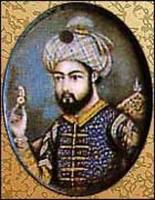Cuttlefish
Scientific name: Sepiida
Habitat: Near coral reefs
Diet: Small Fish, Crabs and lobsters
Predators: Sharks and big Fish
Rank in food chain: Consumer
Type of water it lives in: Saltwater
Size: 1-5 feet
Class: Mollusks
Relatives: Octopus and Squid
Cuttlefish have large, W-shaped pupils, eight arms, and two tentacles furnished with denticulated suckers, with which they secure their prey. They generally range in size from 15 to 25 cm (5.9 to 9.8 in), with the largest species, Sepia apama, reaching 50 cm (20 in) in mantle length and over 10.5 kg (23 lb.) in weight.
Cuttlefish eat small molluscs, crabs, shrimp, fish, octopuses, worms, and other cuttlefish. Their predators include dolphins, sharks, fish, seals, seabirds, and other cuttlefish. Their life expectancy is about one to two years. Recent studies indicate cuttlefish are among the most intelligent invertebrates.Cuttlefish also have one of the largest brain-to-body size ratios of all invertebrates.[2]
The 'cuttle' in 'cuttlefish' comes from the Old English word cudele, meaning 'cuttlefish', which may be cognate with the Old Norse koddi ('cushion') and the Middle Low German küdel ('pouch').The Greco-Roman world valued the cephalopod as a source of the unique brown pigment the creature releases from its siphon when it is alarmed. The word for it in both Greek and Latin, sepia, is now used to refer to a brown pigment in English.








